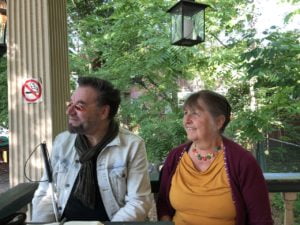Blog 7 : The application of LEED in Heritage preservation:
The renovation of a historic property is often a starting point and an anchor for the redevelopment of a block, a street or a neighborhood.
A building or a historic district, such as Old Aylmer, can be a tangible symbol of the interest of a community to honor its heritage, to enhance its character and sense of place, to make the most of previous investments in infrastructure and development, and to encourage growth in already developed areas.
Rehabilitating historic properties can be an essential part of promoting energy efficiency by preserving the energy already represented by existing buildings (called “intrinsic energy”), rather than spending additional energy on new construction. A new ecological and energy efficient office building which includes up to 40% of recycled materials would nevertheless take around 65 years to recover the energy lost during the demolition of an existing comparable building.
The re-use of old buildings, especially vacant ones, reduces the need for new buildings and the consumption of land, energy, materials and financial resources they need.
Communities that seek to both increase their environmentally sustainable investments and protect their historic assets must resolve standards and policies that can sometimes conflict and make certain projects financially unworkable. Yet the value of overcoming these obstacles is clear – not only for the energy benefits they offer, but also for the economic, cultural and preservation benefits of land use.
Political development decisions affect many things that affect people’s daily lives – their homes, their health, the schools their children attend, the taxes they pay, their daily commute, the natural environment around them, the economic growth of their community and the opportunities to achieve their dreams and goals. What, where and how communities build will affect the lives of their residents for generations to come.
What are the environmental benefits of smart growth strategies?
Development guided by smart growth principles can minimize air and water pollution, reduce greenhouse gas emissions, encourage the cleanup and reuse of contaminated properties, and preserve natural land. Where and how we develop directly affects natural areas and wildlife habitat and replaces natural cover with impermeable surfaces such as concrete or asphalt. Development patterns and practices also indirectly affect the quality of the environment, as they influence the ease with which people can move around.
Smart growth practices can mitigate the environmental impacts of development with techniques that include encouraging compact development, reducing impermeable areas, protecting environmentally sensitive areas, mixing land uses (e.g. homes, offices and stores), promoting public transit and improving pedestrians and cyclists.
That said;
The relationship between identity, culture and community development is immeasurable and yet community development planners and practitioners often ignore these links in their homogenization development initiatives. Project designs, especially top-down community projects, often do not take into account the nuanced ways in which cultural identity, heritage and associated traditions and modes have an impact on the way communities respond to development initiatives, which ultimately affects development results.
Community consultation is too often done after project design, asking communities to simply design a stamp project. Consultation must give way to incorporation for development efforts to be successful. Communities must be able to inject their cultural identities and sometimes even their community policy into the design in order to overcome the homogenizing and exclusionary nature of many top-down community development initiatives.
The underlying premise of this post is that community development in almost all societies must take into account identity and culture, be it national identity, clan, tribe, ethnicity, indignity or professional identities or identities based on location. Identity and culture are important and relevant to national and regional development efforts and results, they are not separated. It is important that community development practitioners not only passively recognize culture, but are aware of the political imperative to incorporate cultural systems, cultural values and heritage.
Architecturally yours,
- Micheline Lemieux, President of the APA-AHA
- Luc L. Paquette, member of the Board and of the Architecture Committee



Leave a comment